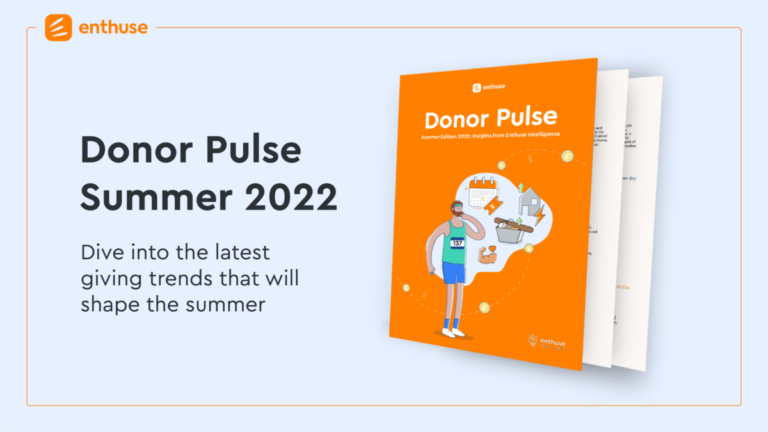The cost of giving and its impact on fundraising

Sponsored post
As the UK struggles with rapidly rising inflation rates and wage stagnation, it’s natural that the charity sector would feel the pinch, as well as all other walks of life. The latest Donor Pulse research from Enthuse examines the factors contributing to the cost of living crisis and how this will affect people’s ability to give as well as its impact on participation in events.
The cost of giving
When it comes to the public’s financial outlook, 58% of people say they are worse off financially than six months ago. The increase in the price of groceries, fuel and energy is bleeding into the charity sector and creating a ‘cost of giving’ crisis, with 55% of the public stating that their financial situation makes it harder to donate.
The research shows that the rising cost of living is the predominant worry for the public, with three quarters (76%) of people naming it as their main concern. This is up from 45% just three months ago. When asked to identify the reasons for feeling worse off financially, British citizens said that energy prices (77%), food prices (71%), and the costs of running a car (43%) were having the greatest impact on them.
The data shows that those who feel worse off are already being more judicious about how much they give and to whom. Just under one in five (17%) have stopped making donations, a further 61% are being more selective or giving smaller and fewer donations to charity – meaning a total of 78% of those who are struggling have reigned in their giving.
Donations stay strong
The good news for charities is that, despite the economic pressures, 74% of the public have donated in the past three months. This is the second highest figure since the start of the pandemic. 80% of under 40s have given in that time, with Gen Z the most generous at 82%. 71% of over 40s gave with Gen X giving the most in that cohort at 75%.
The healthy level of donations includes support for the humanitarian crisis in Ukraine. One in five people (19%) say they have donated to causes supporting Ukraine in the last three months. Interestingly, just 2% of the public donated solely to charities that are helping those in the region. This would seem to indicate that the cost of living is hampering people’s ability to make additional donations, instead seeing them give to the same number of causes, but shifting support to what they see as priorities.
Encouragingly, the public’s intention to donate in the coming months remains high with 73% saying they will do so. Additionally, online donations are at their highest level since this research began in 2020 – 45% of people have given this way in the last quarter. The research also suggests that charities would do well to take donations through their own site, as this leads to a 18% higher donation amount than through a consumer giving platform (£38.39 vs £32.03). Moreover, donors are 42% more likely to remember the name of the charity if they donate directly – which could help encourage repeat giving and foster a stronger relationship between cause and donor.
Fundraising fit?
One of the after effects of the pandemic is that while some people got more active, many were less active. Nearly half of people (47%) say they see their fitness as an obstacle to taking part in physical fundraising events. It’s worth noting that the type of physical fundraising event that interests the most people is walking (50%) – ahead of running in second place at 19%, as well as cycling (16%) and swimming (14%).
The cost of living is not just an issue when it comes to donations but for fundraising as well. The price of registering for an event is not seen as a major deterrent by people when it comes to deciding whether or not to take part (just 14% feel this way) but asking for sponsorship is a different story. One in three people (33%) say they are worried about asking for sponsorship from friends or family in the current economic climate, as they know money is tight.
These financial and fitness obstacles to fundraising may be behind the commitment gap we’re seeing in the sector. In total, 39% of potential participants have considered an event but not yet signed up to take part. This puts the onus on charities to find ways to create events that accommodate people of differing fitness levels while also providing support to fundraisers so they can be successful.


